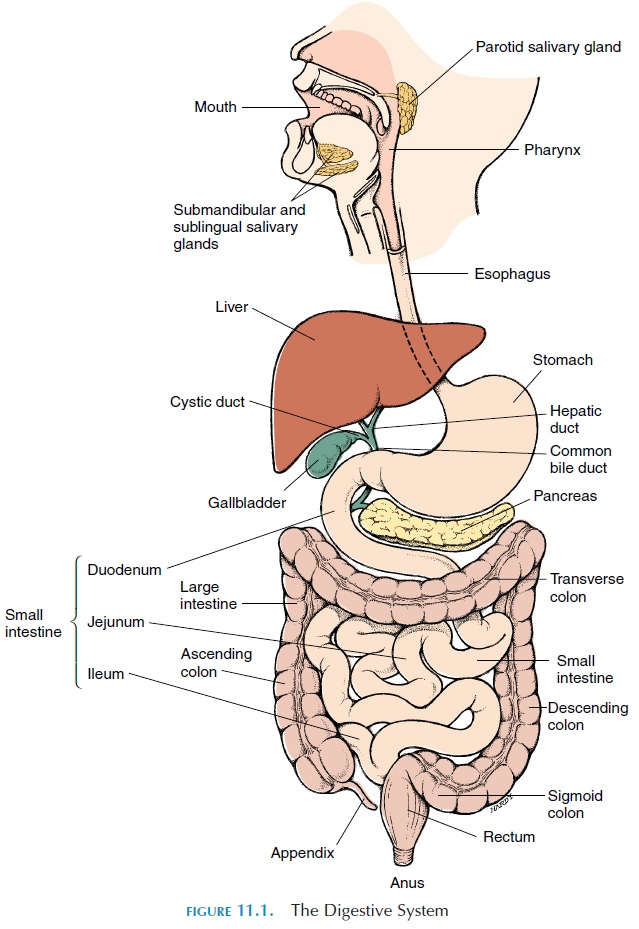Chapter: The Massage Connection ANATOMY AND PHYSIOLOGY : Digestive System
Pharynx, Esophagus - Structure and Function of Digestive System
PHARYNX
The pharynx is the common pathway for food and air and is connected to the nose, throat, and mouth. The pharynx extends from the posterior part of the nose to the entrance of the larynx and esophagus. It is di-vided into three regions—the nasopharynx, the oropharynx, and the laryngopharynx.
The nasopharynx lies above the soft palate and be-gins at the posterior part of the nasal cavity. Some lymphoid tissue—the pharyngeal tonsil—is located here. A tube from the middle ear, the eustachiantube, or pharyngotympanic tube, is found on eitherside. This tube equalizes the air pressure between the atmosphere and middle ear. The pressure has to be equal for normal hearing.
ESOPHAGUS
The esophagus (Figure 11.1) is a long tube that trans-ports food from the mouth to the stomach. It is about 25 cm (10 in) long and 2 cm (0.8 in) wide. It is located behind the trachea and travels downward in the pos-terior part of the thoracic cavity. Before it enters the abdomen, where the stomach is located, it passes through an opening in the diaphragm.

At the proximal end, closer to the pharynx, and at the distal end, closer to the stomach, circular muscles prevent entry of air and backflow of material from the stomach, respectively. The slight narrowing at the lower end of the esophagus is the lower esophagealsphincter. If this sphincter does not close properlyafter the food has entered the stomach, the stomach contents can regurgitate into the lower end of the esophagus. This condition is known as gastro-esophageal reflux disease. Because the contents ofthe stomach are acidic, the walls of the esophagus can become irritated and produce a burning sensa-tion in the epigastric region, referred to as heart-burn.
Swallowing
After mastication, food material is swallowed. The process of swallowing is known as deglutition. De-glutition is only voluntary at the start. Once the food material or bolus reaches the back of the mouth and touches the palatal arches, an involuntary reflex is triggered. The soft palate moves up, closing off the nasopharynx (you don’t breath when you swallow!), the larynx moves upward (have you noticed the thy-roid cartilage–Adam’s apple, bob up and down?), and the epiglottis moves back to close off the larynx and prevent food from entering the respiratory tract. The tongue moves up to the palate. In this way, all exits other than the esophagus are closed. As the food reaches the esophagus, a wave of peristalsis (the wave-like movement of the walls of the gut) occurs. In less than 9 seconds, the food is propelled into the stomach. Reverse peristalsis takes place when vomit-ing occurs.
Related Topics